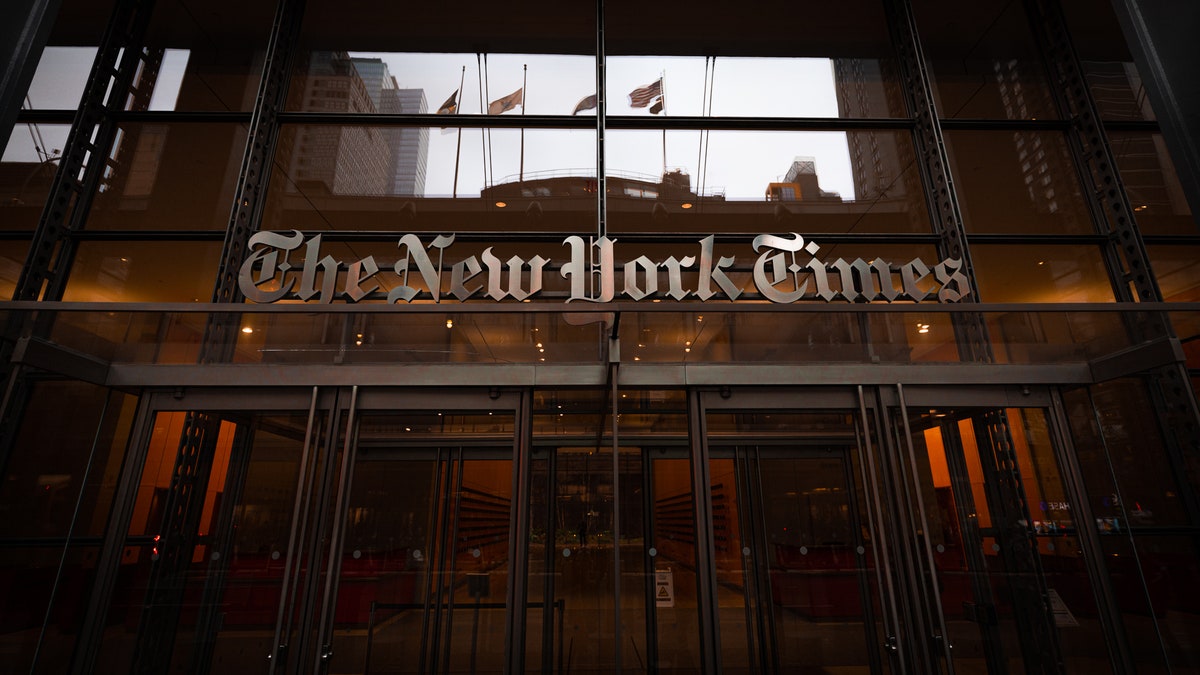Media have not taken responsibility for blaming Israel on Gaza hospital bombing: Mollie Hemingway
FOX News contributor Mollie Hemingway and Rebelle Communications founder and CEO Laura Fink discuss the U.S. media reporting that Israel was responsible for killing 500 people in a Gaza hospital bombing on ‘MediaBuzz.’
The New York Times admitted on Monday that "editors should have taken more care with the initial presentation" of the explosion that occurred at a Gaza hospital last week after the paper "relied too heavily on claims by Hamas."
Much of the legacy media has egg on its face for allowing the Hamas-backed Gaza Health Ministry to set the initial framing of the story, as Hamas’ claim that Israel was at fault was widely parroted. The Israel Defense Forces determined the blast was caused by a rocket misfire launched by Islamic Jihad, another terrorist organization active in Gaza. President Biden, based on evidence from the IDF and U.S. intelligence, has publicly said Israel was not to blame.
The New York Times published a lengthy editor’s note on Monday explaining its mistakes.
"The Times’s initial accounts attributed the claim of Israeli responsibility to Palestinian officials, and noted that the Israeli military said it was investigating the blast. However, the early versions of the coverage — and the prominence it received in a headline, news alert and social media channels — relied too heavily on claims by Hamas, and did not make clear that those claims could not immediately be verified. The report left readers with an incorrect impression about what was known and how credible the account was," Times editors wrote.

The New York Times admitted "editors should have taken more care with the initial presentation" of the explosion that occurred at a Gaza hospital last week after the paper "relied too heavily on claims by Hamas." (DAWOOD NEMER/AFP via Getty Images)
"The Times continued to update its coverage as more information became available, reporting the disputed claims of responsibility and noting that the death toll might be lower than initially reported," Times editors continued. "Within two hours, the headline and other text at the top of the website reflected the scope of the explosion and the dispute over responsibility."
The editor’s note concluded: "Given the sensitive nature of the news during a widening conflict, and the prominent promotion it received, Times editors should have taken more care with the initial presentation, and been more explicit about what information could be verified. Newsroom leaders continue to examine procedures around the biggest breaking news events — including for the use of the largest headlines in the digital report — to determine what additional safeguards may be warranted."
Washington Free Beacon media reporter Drew Holden posted a comprehensive list of "outlets who carried water for a terrorist group to smear Israel" by rushing to parrot claims of the Hamas-backed health ministry before facts came out. He wrote that "perhaps the most egregious disinformation" came from the Times, as the paper quoted Hamas on its homepage.

The New York Times published a lengthy editor’s note on Monday explaining its mistakes with coverage of the explosion that occurred at a Gaza hospital last week. (Fox News Photo/Joshua Comins)
Following the onslaught of news organizations publishing terrorists’ version of events, IDF Spokesperson Jonathan Conricus posted a video "debunking Hamas fake news" that meticulously broke down what Israel believed the media got wrong.
"When there was an explosion at the hospital in Northern Gaza, reports came out and almost immediately many international media outlets were very quick to adopt the Hamas narrative, use Hamas language and claims, and immediately blame Israel," Conricus said.
"As time went by, reality was different from this," Conricus said while pointing to a screen showing headlines from prominent news organizations. "What I will show you now is how we understood that this was a fake."
Conricus then laid out significant evidence that indicated the explosion was actually caused by a rocket misfire launched by the Palestinian Islamic Jihad, including multiple pieces of footage including a thermal view that failed to show the body count alleged by Hamas. The IDF spokesperson also compared the aftermath of Israeli bombs to Hamas rockets, noting that damage to the hospital parking lot mirrored the rockets and that an Israeli bomb would have done significantly more damage.
"I find it sad that so many distinguished, respectable media institutions in the world were so fast and so trigger-happy to report what Hamas was saying, and didn’t wait for confirmation," Conricus said.
The New York Times previously defended its coverage of the hospital explosion to Fox News Digital.
"During any breaking news event, we report what we know as we learn it. We apply rigor and care to what we publish, explicitly citing sources and noting when a piece of news is breaking and likely to be updated. And as the facts on the ground become more clear, we continue reporting. Our extensive and continued reporting on the hospital in Gaza makes explicit the murkiness surrounding the events there," a Times spokesperson said.
Fox News’ David Rutz contributed to this report.
CLICK HERE TO GET THE FOX NEWS APP
For more Culture, Media, Education, Opinion, and channel coverage, visit foxnews.com/media.






















